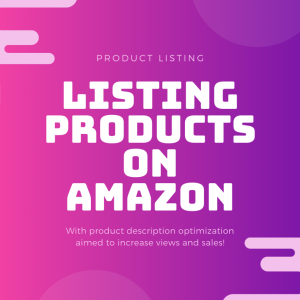Amazon FBA vs. FBM: Which Fulfillment Method is Right for You?

Are you an aspiring e-commerce entrepreneur looking to start selling products on Amazon? If so, you’ve probably come across two popular fulfillment methods: Fulfillment by Amazon (FBA) and Fulfillment by Merchant (FBM). Both options offer unique advantages and considerations, so it’s essential to understand the differences between them to determine which one is right for your business.
Here, we’ll explore the ins and outs of Amazon FBA and FBM, comparing their features, benefits, and potential drawbacks. By the end, you’ll have a clearer understanding of which fulfillment method aligns best with your business goals and preferences.
What is Amazon FBA?
Fulfillment by Amazon (FBA) is a service provided by Amazon that allows sellers to store their products in Amazon’s fulfillment centers. When a customer places an order, Amazon picks, packs, and ships the product on behalf of the seller. Additionally, FBA provides customer service and handles returns, making it a convenient option for many sellers.
Pros of Amazon FBA:
- Prime Eligibility: Products fulfilled by Amazon are eligible for Amazon Prime, which can lead to increased visibility, sales, and customer trust.
- Scalability: FBA allows sellers to easily scale their businesses without worrying about logistics or fulfillment infrastructure.
- Customer Service: Amazon handles customer inquiries, returns, and refunds, freeing up time for sellers to focus on other aspects of their business.
- Global Reach: With FBA, sellers can access Amazon’s vast network of fulfillment centers worldwide, enabling them to reach customers in different regions efficiently.
Cons of Amazon FBA:
- Storage Fees: Sellers incur storage fees for keeping their products in Amazon’s fulfillment centers, which can add up over time, especially for slow-moving inventory.
- Fulfillment Costs: In addition to storage fees, sellers pay fulfillment fees for each order processed by Amazon, cutting into profit margins.
- Less Control: Sellers relinquish some control over the fulfillment process to Amazon, which may lead to challenges in managing inventory levels and shipping times.
What is Fulfillment by Merchant (FBM)?
Fulfillment by Merchant (FBM) is a fulfillment method where sellers store, pack, and ship their products directly to customers from their facilities or third-party warehouses. With FBM, sellers retain full control over the fulfillment process, allowing for greater flexibility and customization.
Pros of Fulfillment by Merchant (FBM):
- Cost Control: FBM allows sellers to avoid certain fees associated with FBA, such as storage and fulfillment fees, potentially leading to higher profit margins.
- Inventory Management: Sellers have greater control over inventory management, allowing them to adjust stock levels and fulfillment processes as needed.
- Brand Representation: FBM enables sellers to include personalized branding, packaging, and marketing materials with each shipment, reinforcing brand identity and customer loyalty.
- Flexibility: Sellers can choose their preferred shipping carriers, delivery speeds, and packaging options, tailoring the fulfillment experience to meet customer expectations.
Cons of Fulfillment by Merchant (FBM):
- Logistical Challenges: FBM requires sellers to handle storage, packing, and shipping logistics themselves, which can be time-consuming and resource-intensive.
- Customer Expectations: Sellers are responsible for providing timely and accurate order fulfillment, as well as handling customer inquiries, returns, and refunds, which may require additional manpower and infrastructure.
- Limited Prime Eligibility: Products fulfilled by merchants may not be eligible for Amazon Prime, potentially impacting visibility and sales velocity.
Which Fulfillment Method is Right for You?
Choosing between Amazon FBA and FBM depends on various factors, including your business model, budget, inventory management capabilities, and long-term goals. Here are some considerations to help you make an informed decision:
- Scale and Growth Plans: If you’re looking to scale your business rapidly and leverage Amazon’s vast customer base and logistics network, FBA may be the ideal choice. However, if you prefer more control over your operations and want to optimize costs, FBM might be a better fit.
- Product Characteristics: Certain products, such as fast-moving items with predictable demand, may be well-suited for FBA due to its efficient storage and fulfillment capabilities. Conversely, niche or customized products may benefit from FBM’s flexibility and personalized fulfillment options.
- Budget and Profit Margins: Consider your budgetary constraints and the impact of fulfillment fees on your profit margins. While FBA offers convenience and scalability, the associated fees can eat into your bottom line, especially for low-margin products. FBM allows for more cost control but requires upfront investment in infrastructure and logistics.
- Brand Identity and Customer Experience: If building a strong brand identity and delivering a personalized customer experience are top priorities for your business, FBM may offer more opportunities for customization and branding. However, FBA provides the convenience of Prime eligibility and Amazon’s trusted fulfillment services, which can enhance customer trust and satisfaction.
In conclusion, both Amazon FBA and FBM offer distinct advantages and considerations for e-commerce sellers. By carefully evaluating your business needs, preferences, and long-term goals, you can determine which fulfillment method aligns best with your objectives. Whether you prioritize scalability, cost control, brand representation, or customer experience, there’s a fulfillment solution that’s right for you. Choose wisely, and position your business for success in the competitive world of e-commerce.
For more insights and guidance on navigating the complexities of Amazon selling and e-commerce fulfillment, stay tuned to our blog for future updates and expert tips. We’re here to help you thrive in the dynamic world of online retail.
